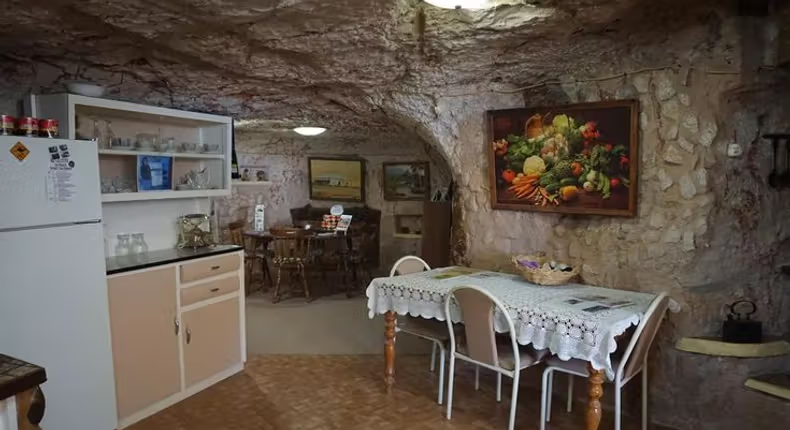2 mn read
Some communities have adapted to living beneath the earth due to environmental challenges, historical reasons, or practical needs. Here are five notable underground societies:
- Coober Pedy, Australia
- Description: Known as the “opal capital of the world,” Coober Pedy is a town where many residents live in underground homes, called “dugouts.” This adaptation is due to the extreme desert heat, which can reach over 40°C (104°F). The underground dwellings provide natural insulation against the heat and cold, and the town also features underground shops, churches, and hotels.
- Cappadocia, Turkey
- Description: Cappadocia is renowned for its unique rock formations and ancient underground cities. These subterranean complexes, such as Derinkuyu, were carved into volcanic rock thousands of years ago for protection against invasions. The underground cities include living spaces, food storage, and even churches and schools, and some are still used or visited by tourists.
- Setenil de las Bodegas, Spain
- Description: In Setenil de las Bodegas, many homes and businesses are built into the cliffs of a narrow river gorge. Rather than being fully underground, the town’s structures are integrated into natural rock formations, with some buildings sheltered under large overhanging rocks. This approach offers natural protection and creates a visually striking landscape.
- Matmata, Tunisia
- Description: Matmata is a Berber village where residents live in underground dwellings carved from soft sandstone. These homes are built around large pits that serve as courtyards, with rooms excavated into the pit walls. This design helps keep the homes cool in the desert heat. Matmata also gained fame as a filming location for “Star Wars,” attracting tourists to its unique architecture.
- Beijing’s Underground City, China
- Description: During the Cold War, Beijing constructed an extensive underground network known as the “Underground Great Wall” to protect residents from potential nuclear attacks. Spanning over 85 square kilometers (33 square miles), the network was never used for its intended purpose but has been repurposed as affordable housing for some of Beijing’s residents, particularly migrant workers.
These underground societies illustrate the diverse ways humans have adapted to their environments and challenges throughout history.

